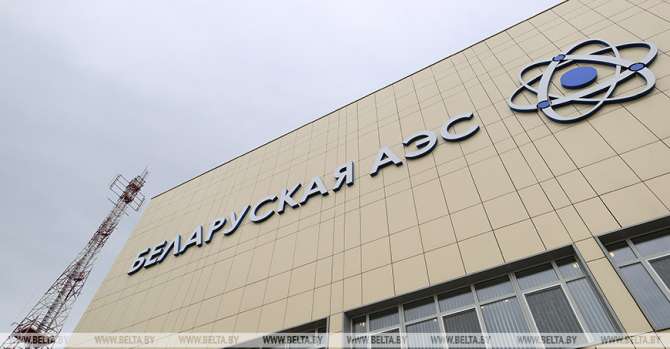Minister: Second unit of BelNPP will be put into commercial operation in October 2023
6 March 2023, 14:29

The first trial linkup of the second unit to the national power grid is scheduled for April. The capacity of the reactor will be raised to 40%. “In April-September, we will be increasing the capacity of the reactor to the nominal one and carry out tests as part of trial commercial operation. The nuclear power plant will fully go online in October 2023, in accordance with the commissioning programs," Viktor Karankevich said.
The minister recalled that the first unit was put into operation in June 2021. In 2022, it underwent the first scheduled maintenance and is currently operating at the nominal capacity.
"The construction and technological readiness of the second unit is about 98%. Preparatory work is underway to start the chain reaction and bring the reactor to the minimum controlled level - 1% of the reactor capacity," the minister informed.
The president said that radiation safety and operational reliability of the nuclear power plant is a priority of priorities. “We discussed these matters thoroughly when we were weighing up whether we should go for this project, we took into account the world experience. The highest technologies are used here. This is the asset of our people. Therefore, all aspects of the construction and operation of the nuclear power plant require special attention and a balanced approach,” Aleksandr Lukashenko added.
Measures to increase electricity consumption in the country were considered during the meeting, Viktor Karankevich told reporters. “This is about an inter-sectoral set of measures for the real economy sector. This includes the construction of new facilities and the modernization of existing production facilities. This is an increase in energy consumption by households for the purposes of heating and hot water supply, the development of electric transport. The task was set to analyze how the work in all these areas is organized and how this potential is used," the minister said.
The Belarusian NPP is put into operation in compliance with all safety requirements. "The stage program provides for a certain number of tests and appropriate measures. The transition to the next stage is impossible without high-quality and accurate implementation of previous tests and measures,” the minister explained. "The number one task is nuclear and radiation safety of the facility."
The first power unit has already generated more than 12.5 billion kWh, which made it possible to replace more than 3 billion cubic meters of gas and save more than $400 million.
The Belarusian nuclear power plant uses the Russian design AES-2006 featuring two VVER-1200 reactors with the total output capacity of 2,400MW. It is an evolutionary nuclear power plant design with third-generation water-moderated reactors with enhanced safety. Such designs boast improved technical and economic parameters. A combination of active and passive safeguards is their key feature. The building housing the reactor is covered by a double protective shell. The reactor can survive an earthquake, a hurricane, or flooding.
The VVER technology is by far the most demanded and tested in the world. The technology was used to commission nuclear power plants in China and India over the course of the last ten years and will be used to commission nuclear power plants in Egypt, Türkiye, Hungary, Bangladesh, and Uzbekistan.

